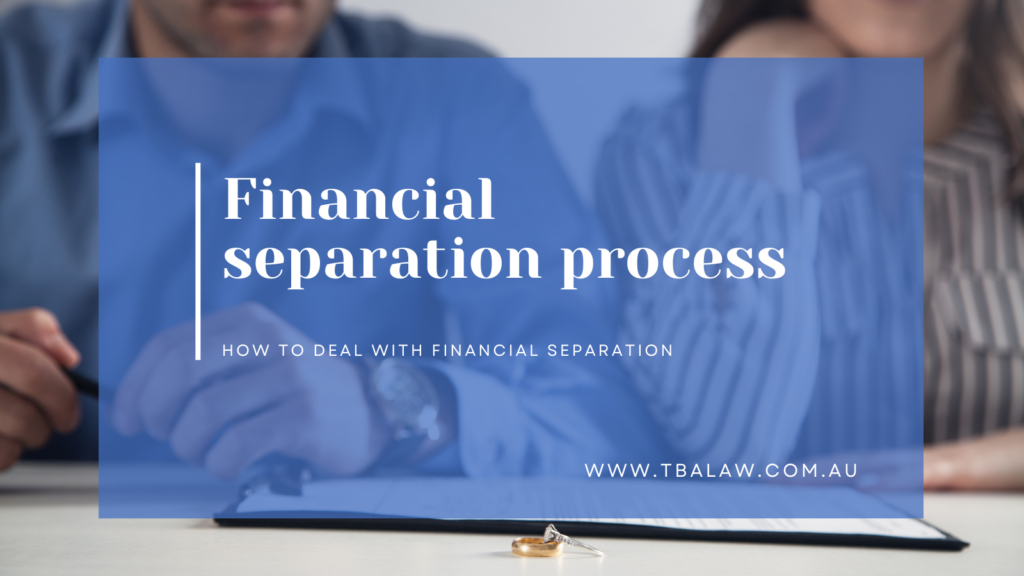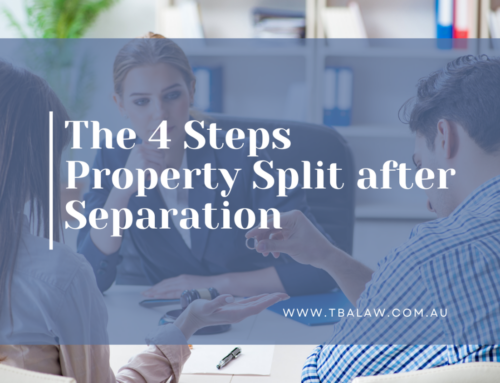The Financial Separation Process
by Jacqui Brauman
The first thing that you need to know about the Financial Separation process is that it is separate from a divorce. You do not need to have already gone through a divorce in order to participate in the financial separation process.

Binding or a non-binding arrangement
When you come to an agreement about a how you want to do your financial separation, you can either have a binding or a non-binding arrangement. If you come to an agreement and you really trust each other and you’re going to move on, and I believe that it’s nearly 50% of couples when they separate and do not need lawyers’ intervention, and they’re able to deal with their financial settlement and off they go separately and there’s no repercussions, then that’s fine.
But understand that if you don’t have a binding agreement and that trust erodes, or someone else new comes into the picture and you want to prevent someone from having a double-dip from coming back and saying, “Well, that wasn’t enough,” you can do a binding agreement so that it’s actually final. You can do a binding agreement either in or out of court. If you want to go through the court, you don’t actually have to go, you just submit what your agreement is and the court can basically rubber stamp it for you, which is going through the process of consent orders.
Now the law does require that a contract be fair and equitable, so you must make sure that your agreement meets these criteria. If it is sealed by the court, then it becomes legally binding. The other way to enter into a binding contract is to have what’s called a Family Law Act during or after a relationship has ended. These are often called prenuptial agreements, but they can also be used during your relationship if circumstances change, or after separation as well.
A binding financial agreement does not have to go through the court, so it is not subject to the fair and equitable test. If you enter into an agreement that is not exactly fair and equitable but you are okay with that, it is best to use a non-binding financial agreement. You can reach an agreement with each other and either go for binding or non-binding. If you want a binding arrangement, you can enter into one in court or out of court.
Reaching a fair and equitable financial separation agreement is often a difficult process, and determining if an agreement reached is fair can be even more challenging. So, the court applies a four step process to test whether a financial separation is fair and equitable. There are other tools you can use, such as the AI tool Amica, which stands for amicable. You can put in all your information and the robot will tell you what is fair and equitable.
Mediation
You may also want to consider mediation. Mediation can be a less expensive and quicker option than going through lawyers. While lawyers usually communicate by letter, sometimes taking months to respond, mediation is carried out in person and usually takes only half a day or one full day. If you don’t want to use a lawyer-mediator, you can find a lot of non-lawyer mediators through the Mediation Institute. If you want to use a lawyer-mediator, you can find a list of them at the Law Institute. If you’d like help finding a private mediator who isn’t also a lawyer, we can put you in touch with local mediators who aren’t lawyers. There is one mediation service that offers online mediation: Interact Support. You can get started within a month, and usually finish within just one day or half day.
So start by doing that, and then once you have an agreement, you can either leave it as a non-binding contract or turn it into a binding contract. So then you’d bring it to a lawyer and use either a court process or non-court process.
We hope you never have to go through a financial separation process, but if you do, we are here to help you make the process easier.
Get in touch with our team at admin@tbalaw.com.au or call 1300 043 103 to book an appointment.





Leave A Comment